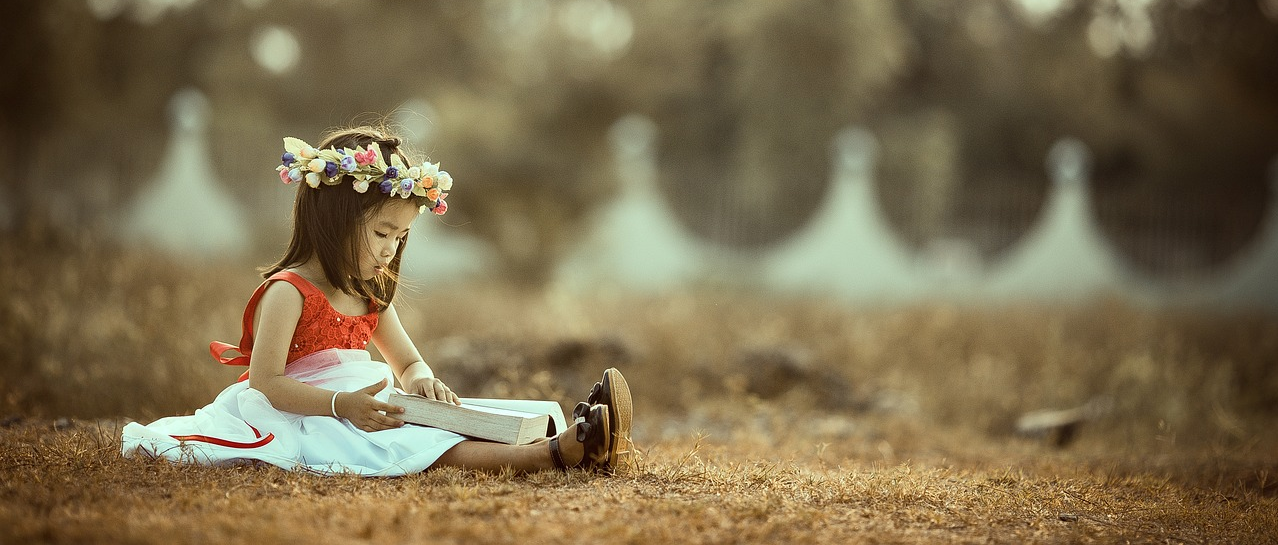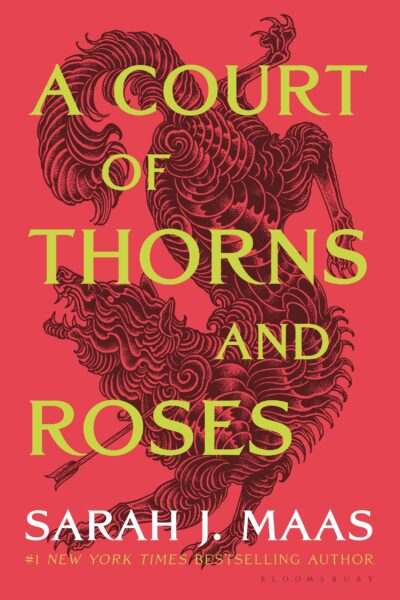A Court of Thorns and Roses
Chapter 25
by Maas, Sarah J.The chapter opens with Tamlin being called away to address the encroaching blight at the borders, leaving the protagonist anxious about his safety. Despite her growing attachment to him, she struggles with the brutal realities of the faerie courts, symbolized by the severed head she previously discovered. Lucien reassures her of Tamlin’s well-being, but her unease lingers, compounded by the grotesque games played with mortal lives. The tension is momentarily overshadowed by the preparations for the Summer Solstice celebration, a stark contrast to the darkness creeping into the court.
The protagonist awakens to a festive atmosphere, with the estate adorned in ribbons and maypoles being erected. Alis informs her that the solstice celebration, once held at the Summer Court, will now take place here. The protagonist reflects on her mortal family, wondering if they still believe her to be visiting a distant aunt, and compares their humble village festivities to the grandeur of the faerie solstice. Tamlin’s prolonged absence gnaws at her, though she distracts herself by painting the vibrant decorations, all while dreading the possibility of him participating in faerie rites akin to Fire Night.
Tamlin and Lucien finally return, unharmed and in high spirits, much to the protagonist’s relief. Alis dresses her in an elegant gown and adorns her hair with a wildflower garland, highlighting her physical transformation since arriving in the faerie realm. Lucien teases her for looking “positively Fae,” while Tamlin’s quiet compliment stirs her emotions. Despite her efforts to remain composed, his presence and touch ignite a longing she struggles to conceal. The trio heads to the solstice celebration, where Tamlin explains the event’s significance as a time of neutrality and unity among faeries.
The plateau is alive with music, dancing, and feasting, though the protagonist initially feels out of place among the gathered faeries. Tamlin’s protective growl discourages lingering stares, allowing her to enjoy the festivities. She savors the food and contemplates painting the scene, captivated by the lanterns, ribbons, and ethereal dancers. As the sun sets, the celebration grows livelier, with bonfires lighting up the hills. Despite the joy around her, the protagonist’s thoughts occasionally drift back to the blight and her precarious position in the faerie world, balancing wonder with underlying dread.
FAQs
1. How does the Summer Solstice celebration in the Spring Court differ from traditional human solstice celebrations, and what does this reveal about Fae culture?
Answer:
The Summer Solstice in the Spring Court is depicted as a grand, spirited event with elaborate decorations (ribbons, streamers, maypoles), bonfires, music, dancing, and feasting—far more extravagant than the modest human gathering Feyre recalls from her village. While humans view it as a brief respite from labor (planting/tilling), the Fae treat it as a sacred time of neutrality where social hierarchies dissolve (“just enjoy being a faerie—not High Fae or faerie”). This highlights key Fae cultural values: revelry, communal unity, and a deeper connection to natural cycles. The contrast also underscores the Fae’s longevity and magical abundance compared to mortal struggles (pp. 220-223).2. Analyze the significance of Tamlin’s behavior toward Feyre in this chapter. How does it reflect their evolving relationship?
Answer:
Tamlin’s actions reveal growing care and vulnerability. He breaks precedent by spending a night away but ensures Lucien updates Feyre—a gesture she notes as unexpected. His compliment (“You look lovely”) and physical closeness (holding her arm, making her “aware of every inch” of contact) show emotional openness, contrasting his earlier aloofness. Feyre’s internal conflict—worrying for his safety while resisting her feelings—mirrors his guarded yet affectionate demeanor. Their dynamic shifts from transactional to intimate, symbolized by their shared walk to the celebration, though both still hesitate to fully acknowledge their attraction (pp. 220-223).3. What thematic role does the “blight” play in this chapter, and how does it create tension beneath the festive atmosphere?
Answer:
The blight serves as a looming threat that contrasts sharply with the solstice’s joy. Tamlin’s secrecy about the border crisis (“where and why, he wouldn’t tell me”) and Feyre’s observation that it’s “crawling from other courts” foreshadow danger. This creates dramatic irony: while faeries celebrate, readers sense impending chaos. The blight also symbolizes corruption in Prythian’s courts, echoing Feyre’s disgust at their “games” with lives as “tokens.” The tension underscores the fragility of peace and Feyre’s precarious position as a mortal in a world where beauty masks brutality (pp. 220-221).4. How does Feyre’s physical transformation since arriving in Prythian reflect her internal changes?
Answer:
Feyre’s body shifting from “skeletal” to “soft curves” mirrors her emotional and psychological growth. Initially malnourished from human poverty, she now thrives in the Spring Court, symbolizing her adaptation to Fae life. Her surprise at her own reflection (“I had never thought I would feel anything but muscle and bone”) parallels her dawning self-worth and acceptance of pleasure (e.g., painting, Tamlin’s attention). The garland Alis weaves for her—childlike yet beautiful—hints at her transition into a new identity, straddling human resilience and Fae allure (p. 222).5. Evaluate Lucien’s role in this chapter as both comic relief and a bridge between Feyre and Tamlin.
Answer:
Lucien balances humor and insight. His teasing (“Cauldron boil me”) lightens tense moments (e.g., Feyre’s worry over Tamlin), while his explanations (“Solstice celebrates neutrality”) educate Feyre (and readers) about Fae customs. As Tamlin’s emissary, he facilitates their connection—delivering messages, easing Feyre’s fears, and nudging them together (“dallying” remark). Yet his absence when Feyre eats alone reminds us of his loyalty to Tamlin first. His wit masks deeper observations, like noting Feyre looks “positively Fae,” subtly acknowledging her transformation (pp. 221-223).
Quotes
1. “I knew—I knew I was headed down a path that would likely end in my mortal heart being left in pieces, and yet … And yet I couldn’t stop myself.”
This quote captures Feyre’s internal conflict as she acknowledges her growing feelings for Tamlin despite the risks of loving a faerie. It represents the chapter’s theme of forbidden attraction and foreshadows emotional turmoil.
2. “Solstice celebrates when day and night are equal—it’s a time of neutrality, when everyone can take down their hair and simply enjoy being a faerie—not High Fae or faerie, just us, and nothing else.”
Tamlin explains the significance of the Summer Solstice, highlighting a rare moment of unity in the faerie world. This quote showcases the cultural depth of Prythian and serves as contrast to the court’s usual political tensions.
3. “Indeed, every brush of Tamlin’s body against mine made it harder to avoid the urge to lean into him entirely, to smell him and touch him and taste him.”
This passionate description reveals the intensity of Feyre’s physical attraction to Tamlin. It marks a turning point in their relationship as she struggles to contain her desires during the festivities.
4. “She looks positively Fae.”
Lucien’s observation about Feyre’s transformed appearance symbolizes her gradual assimilation into the faerie world. This brief but impactful quote represents her physical and psychological changes since arriving in Prythian.
Quotes
1. “I knew — I knew I was headed down a path that would likely end in my mortal heart being left in pieces, and yet … And yet I couldn’t stop myself.”
This quote captures Feyre’s internal conflict as she acknowledges her growing feelings for Tamlin despite the risks of loving a faerie. It represents the chapter’s theme of forbidden attraction and foreshadows emotional turmoil.
2. “Solstice celebrates when day and night are equal—it’s a time of neutrality, when everyone can take down their hair and simply enjoy being a faerie—not High Fae or faerie, just us, and nothing else.”
Tamlin explains the significance of the Summer Solstice, highlighting a rare moment of unity in the faerie world. This quote showcases the cultural depth of Prythian and serves as contrast to the court’s usual political tensions.
3. “Indeed, every brush of Tamlin’s body against mine made it harder to avoid the urge to lean into him entirely, to smell him and touch him and taste him.”
This passionate description reveals the intensity of Feyre’s physical attraction to Tamlin. It marks a turning point in their relationship as she struggles to contain her desires during the festivities.
4. “She looks positively Fae.”
Lucien’s observation about Feyre’s transformed appearance symbolizes her gradual assimilation into the faerie world. This brief but impactful quote represents her physical and psychological changes since arriving in Prythian.
FAQs
1. How does the Summer Solstice celebration in the Spring Court differ from traditional human solstice celebrations, and what does this reveal about Fae culture?
Answer:
The Summer Solstice in the Spring Court is depicted as a grand, spirited event with elaborate decorations (ribbons, streamers, maypoles), bonfires, music, dancing, and feasting—far more extravagant than the modest human gathering Feyre recalls from her village. While humans view it as a brief respite from labor (planting/tilling), the Fae treat it as a sacred time of neutrality where social hierarchies dissolve (“just enjoy being a faerie—not High Fae or faerie”). This highlights key Fae cultural values: revelry, communal unity, and a deeper connection to natural cycles. The contrast also underscores the Fae’s longevity and magical abundance compared to mortal struggles (pp. 220-223).
2. Analyze the significance of Tamlin’s behavior toward Feyre in this chapter. How does it reflect their evolving relationship?
Answer:
Tamlin’s actions reveal growing care and vulnerability. He breaks precedent by spending a night away but ensures Lucien updates Feyre—a gesture she notes as unexpected. His compliment (“You look lovely”) and physical closeness (holding her arm, making her “aware of every inch” of contact) show emotional openness, contrasting his earlier aloofness. Feyre’s internal conflict—worrying for his safety while resisting her feelings—mirrors his guarded yet affectionate demeanor. Their dynamic shifts from transactional to intimate, symbolized by their shared walk to the celebration, though both still hesitate to fully acknowledge their attraction (pp. 220-223).
3. What thematic role does the “blight” play in this chapter, and how does it create tension beneath the festive atmosphere?
Answer:
The blight serves as a looming threat that contrasts sharply with the solstice’s joy. Tamlin’s secrecy about the border crisis (“where and why, he wouldn’t tell me”) and Feyre’s observation that it’s “crawling from other courts” foreshadow danger. This creates dramatic irony: while faeries celebrate, readers sense impending chaos. The blight also symbolizes corruption in Prythian’s courts, echoing Feyre’s disgust at their “games” with lives as “tokens.” The tension underscores the fragility of peace and Feyre’s precarious position as a mortal in a world where beauty masks brutality (pp. 220-221).
4. How does Feyre’s physical transformation since arriving in Prythian reflect her internal changes?
Answer:
Feyre’s body shifting from “skeletal” to “soft curves” mirrors her emotional and psychological growth. Initially malnourished from human poverty, she now thrives in the Spring Court, symbolizing her adaptation to Fae life. Her surprise at her own reflection (“I had never thought I would feel anything but muscle and bone”) parallels her dawning self-worth and acceptance of pleasure (e.g., painting, Tamlin’s attention). The garland Alis weaves for her—childlike yet beautiful—hints at her transition into a new identity, straddling human resilience and Fae allure (p. 222).
5. Evaluate Lucien’s role in this chapter as both comic relief and a bridge between Feyre and Tamlin.
Answer:
Lucien balances humor and insight. His teasing (“Cauldron boil me”) lightens tense moments (e.g., Feyre’s worry over Tamlin), while his explanations (“Solstice celebrates neutrality”) educate Feyre (and readers) about Fae customs. As Tamlin’s emissary, he facilitates their connection—delivering messages, easing Feyre’s fears, and nudging them together (“dallying” remark). Yet his absence when Feyre eats alone reminds us of his loyalty to Tamlin first. His wit masks deeper observations, like noting Feyre looks “positively Fae,” subtly acknowledging her transformation (pp. 221-223).



0 Comments